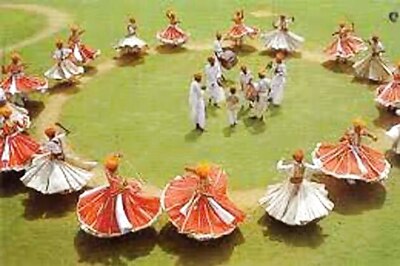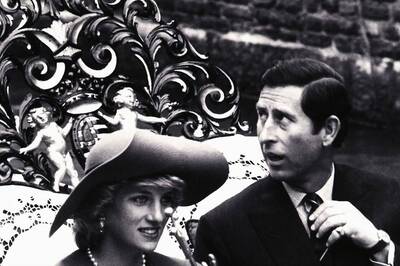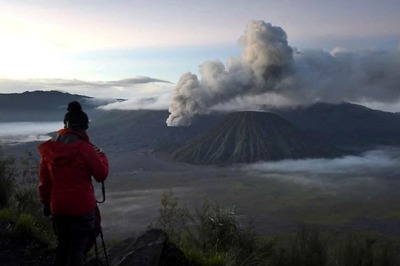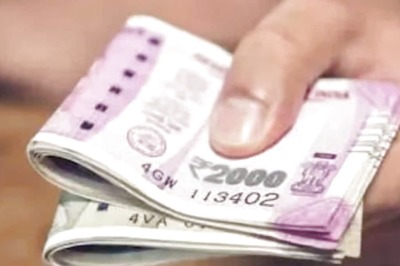
views
Imagine the importance of Jerusalem for Christianity and Mecca for Islam, amplify it a million times, and even that cannot match the importance of Kashi for Hindus.
In hymns of Rigveda, the city is referred to as Kāśī (Kashi) from the Sanskrit verbal root kaś—which means “to shine”—making Varanasi the “City of Light”. That light becomes a part of the “Prakash Punj” or Jyotirlinga of Visvesvaraya “Vishwanath”, it becomes a part of the light of knowledge (“Gyan”), as well as the eternal light of “Moksha”, and the light of thousands of earthen lamps. If the city is known as Kashi, Varanasi and Banaras (Benaras) in present times, it has been known as Jitwari, the place where business is good, or Pushwavati, the flower garden city, or Molini, the lotus garden city during the Buddhist period. In ancient times, it was known as Kāśikā “the shining one”, Avimukta “never forsaken” by Shiva, Ānandakānana “the forest of bliss”, and Rudravāsa “the place where Rudra/Śiva resides”.
The history of the city spans over 10,000 years and it is not only one of the seven sacred cities of Hindus but has been continuously habited for at least 4,000 years, thus making it the oldest surviving city. By 1000 BCE, Kashi was well established as the seat of learning of Philosophy, which we know today as Hindu scriptures. By the time of Gautam Buddha, which is nearly 600 BCE, the city was well established as a commercial and industrial centre, famous for perfumes, ivory works, muslin and silk fabrics and sculpture.
It has found mention in the writings of Chinese traveller Xuan Zang (Hsüan-Tsang) as a densely populated place, with tightly packed homes in its lanes and people who are “enormously wealthy”, mild and courteous. According to him, the culture of the city was an amalgamation of a few Buddhists, and mostly heretics (Hindus). He described Kashi as one of the centres of “Aghor” as well. The documented history of the city mentions it as having over a hundred deva temples, most of them dedicated to Mahesvara (Shiva).
Here, in Kashi, Shiva does not only reside in temples but it is believed that every grain (kankar) is the manifestation of Shiva himself. The god is in culture, which has continued for several thousand years. “Har-Har Mahadev” is not a chant but a way of greeting in Kashi. In the town, one can find a temple in almost every house. The day begins with prayers to Shiva in almost every household. Kashi is spontaneously free-flowing, ever-evolving temples in the maze of narrow lanes on the Ganges’ crescent-shaped western bank.
Vishveshvara holds a very special place in the heart of Kashi. It is believed that the original temple of Vishveshvara (Vishvanath) was built around 5th century during the period of Vainya Gupta, the Shaivite king. The first blow to the Vishveshvara temple came during Qutb-Uddin Aibak’s time during 1194. After nearly 30 years, the temple was rebuilt ~1230 AD and faced another blow by Mahmud Shah Sharqi during 1447-8. It was restored and rebuilt by Raghunath Pandit (Todarmal) in 1584-85. The city came under the rule of Aurangzeb (1658-1707) and faced a massive struggle to hold its heritage and culture. In 1664, the Battle at Gyanpavi between the Dashanami Naga ascetics and the army of Aurangzeb took place. In 1669, the Vishveshvara temple was demolished by Aurangzeb and converted into a mosque, known as Gyanvapi Mosque. The devastation of Kashi temples continued for several years under Aurangzeb and in 1673, Veni/Vindu Madhava temple situated at Panch Ganga Ghat was also destroyed, where today’s Alamgir Mosque is situated.
Kashi, being an eternal city, rose again and during 1775-76, Ahilyabai, the Queen of Indore, constructed the present Vishveshvara/Vishvanath temple. The restoration continued and in 1785 Devi Ahilyabai extended it to Dashashwamedh Ghat, along with many other temples of Varanasi. The glory of Vishwanath was enhanced by Maharaja Ranjit Singh of Kashmir in 1839, who offered gold for the dome of the Vishwanath temple. The current Kashi Vishwanath corridor adds to the long tradition of the glorious past of the Kashi and Vishwanath temple.
Kashi is not another temple town. Within Kashi, there are temples that are hundreds or thousands of years old. It holds the essence of religion and all possible panths. Be it Sarnath temple, where Buddha is believed to have distributed among his disciples the first sermon after enlightenment, or the temples of four Jain Tirthankars, the Vishalakshi Shakti Peeth, Durga temple of the 8th century, Gauri Mata temple, Sankat Mochan temple for Lord Hanuman, a temple dedicated to “Ram Charit Manas” and the Bharat Mata temple dedicated to Mother India, you name it and you will find a temple of the deity. No wonder, Kashi itself is a temple of the scale of a city.
Kashi is a city of legends. But to get a true picture of the city, one must put all the mythological, ancient and historical context in one place. Because Kashi is also overburdened by its own legends, which are self-contradictory, incomprehensible and incredible to prove. It is in no one’s capacity to write that one seminal piece on glory of Kashi, or temples of Kashi, or Vishwesvara himself. It is “Achintya”, beyond comprehension. It’s wise to say “Neti-Neti” (neither this, nor that) and submerge oneself in the eternal light of “Kashi”.
Chandan Upadhyay is Associate Professor, IIT-BHU, Varanasi. The views expressed in this article are those of the author and do not represent the stand of this publication.
Read all the Latest Opinions here


















Comments
0 comment